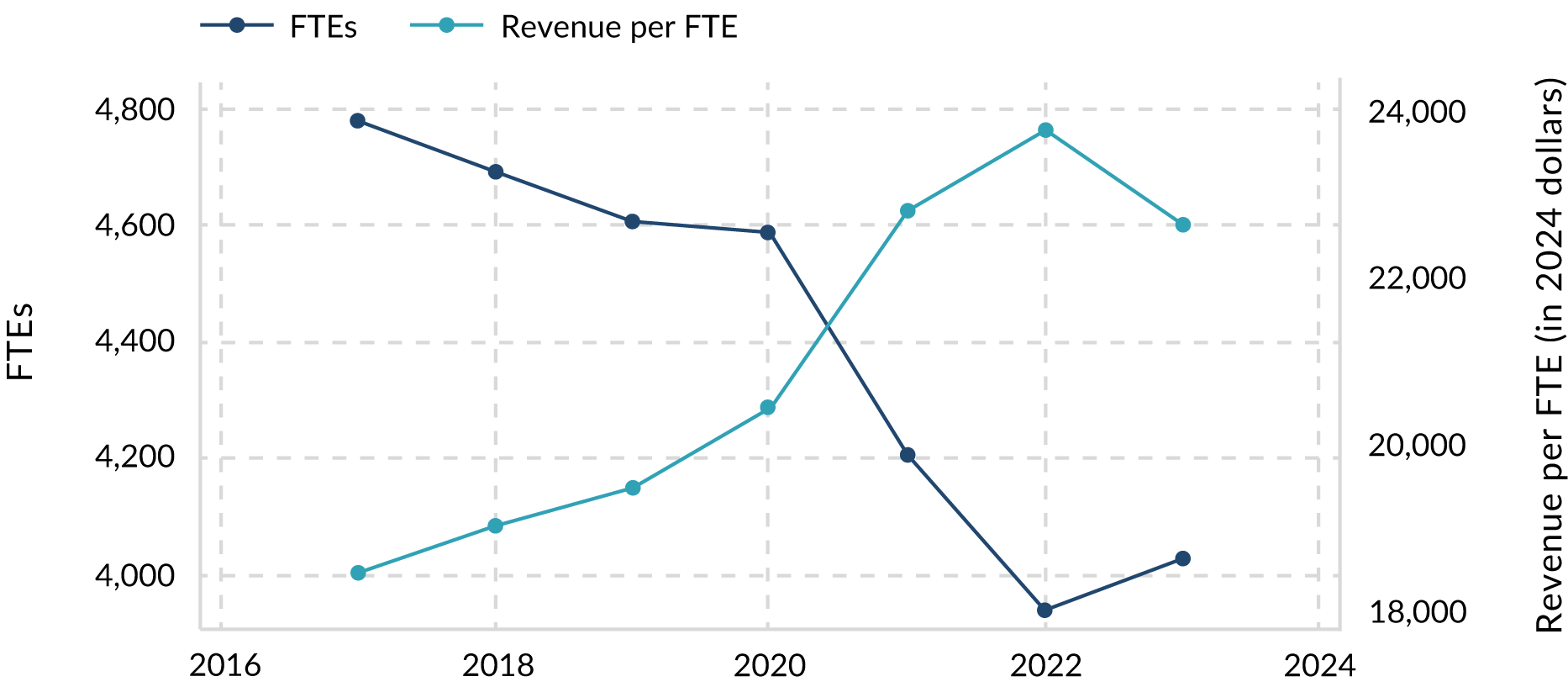Funding Community Colleges After HEERF
Clive Belfield and Thomas Brock

Totalling $25 billion over three years, federal Higher Education Emergency Relief (HEER) funding for community colleges was critical in helping these institutions respond to the COVID-19 pandemic. HEER funds significantly impacted college revenues and financial support for students, actually increasing the amount of spending per full-time-equivalent (FTE) student over pre-pandemic levels and making up for the lost tuition from drastic enrollment drops. Community colleges were able to quickly push the money out to students and use it to stabilize programs. In addition to direct grants to students and other financial support, colleges spent HEER funds on technology upgrades, campus safety equipment, and mental health services.
HEER funding ended in 2023. Now, community colleges must deal with the lingering effects of the pandemic without direct federal support. With newly released institutional data from the Integrated Postsecondary Education Data System (IPEDS), we can see how community college finances have changed now that HEER funds are gone.
Related Blog Post: How Many Community Colleges Have Fully Recovered Their Enrollments Three Years After the Pandemic?
Using newly released institutional data from IPEDS, this CCRC blog post provides the most detailed look yet at enrollment trends at individual community colleges and state systems since the onset of the COVID-19 pandemic. Embedded data dashboards allow users to disaggregate enrollments by age and race/ethnicity and examine trends in their own college, state, and sector.
Revenue Is Reverting to Pre-Pandemic Levels
Total revenue, averaged per community college, is shown in the figure below (all amounts are in 2024 dollars). Before the pandemic (2018-19), revenue was $81 million per college. During the pandemic (2021-22), revenue rose to almost $85 million, mostly because of HEER funds. Average revenue has now reverted to under $83 million, with the disappearance of HEER funds being partly offset by increased state/local funding.
Explore revenue data for your college or state in this Tableau dashboard.
Revenue per Community College (in millions of 2024 dollars)
Enrollment Changes Drive Revenue Fluctuations
Enrollment and revenue per FTE are shown together in the figure below. Enrollment dropped approximately 15% after the onset of the pandemic: It averaged 4,600 FTEs in 2019, was down to 4,200 by 2021, and was under 4,000 by 2022.

Note: The figure shows average values per college among 922 community colleges.
As enrollment fell, total revenue did not fall as much as initially feared: HEER funding was available, and state and local funding was broadly stable. Therefore, revenue per FTE rose significantly during the pandemic. It reached a peak of almost $24,000 per FTE in 2022. The dual effect of fewer students and extra funding unquestionably helped colleges survive the pandemic and invest in educational technology and other supports for students and faculty. Perhaps most important, it provided emergency aid to help students cover personal expenses associated with staying in school.
However, the dual effect is now directly reversed: Colleges have more students but lower total funding. The first figure shows the fall in funding in 2023; and the second figure shows how enrollments rose (albeit modestly) in 2023. The result is a steep one-year decline of 6% in revenue per FTE. An important question for the future is whether this decline continues or if FTE funding levels off.
There are many scenarios in which colleges might face financial insecurity. State/local funding may have “maxed out.” Extra costs of the pandemic (for personnel or organizational restructuring) may remain or even increase. On the other hand, community colleges tend to enjoy broad support from state and local policymakers and the public. CCRC will continue to track community college funding and examine efforts by states to ensure adequate and equitable funding for community colleges.
